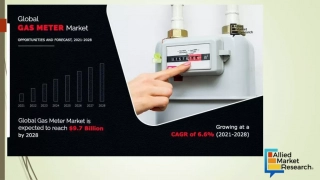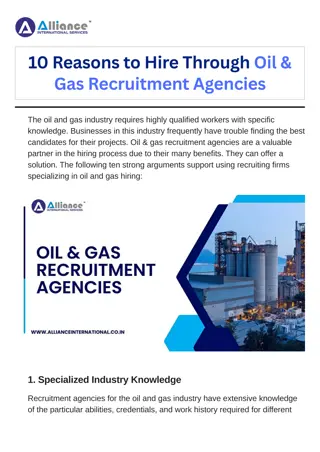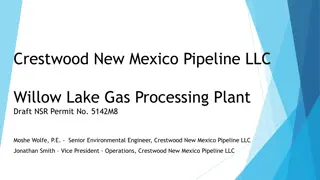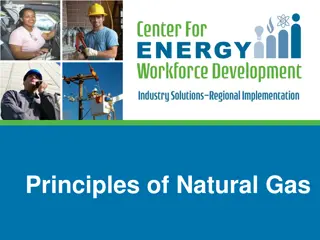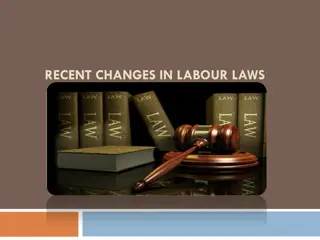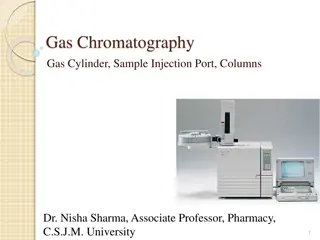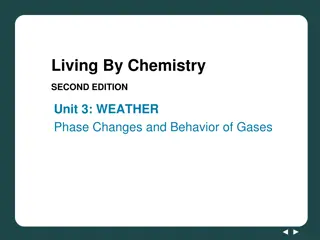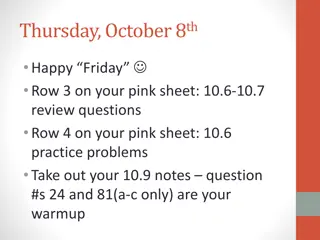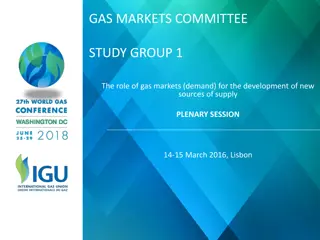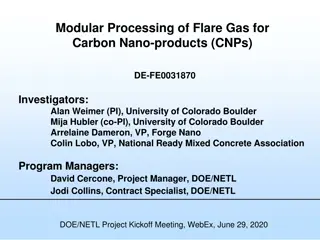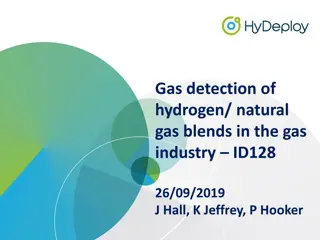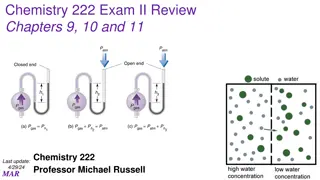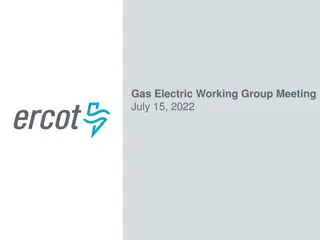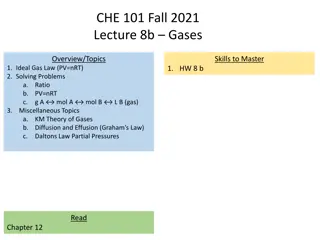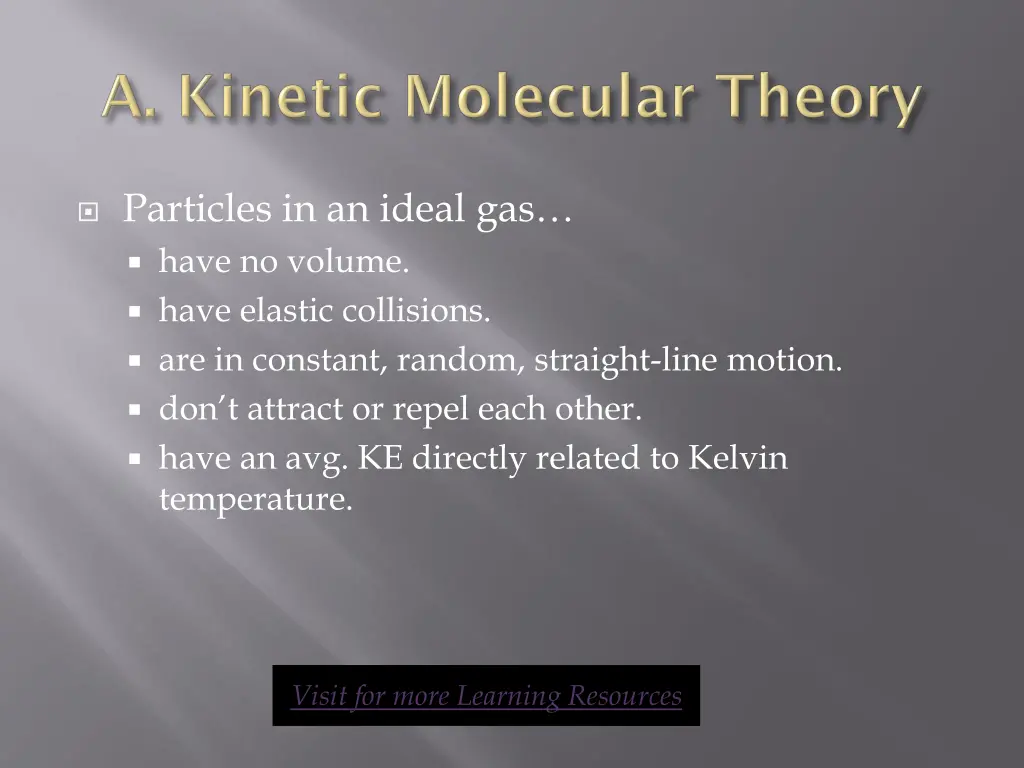
Gas Behavior and Properties in Ideal vs. Real Gases
Explore the fundamental differences between ideal and real gases, including their behavior, volume effects, attraction forces, and density. Learn about gas expansion, compression, diffusion, and the relationships between pressure, volume, temperature in gas laws.
Download Presentation

Please find below an Image/Link to download the presentation.
The content on the website is provided AS IS for your information and personal use only. It may not be sold, licensed, or shared on other websites without obtaining consent from the author. If you encounter any issues during the download, it is possible that the publisher has removed the file from their server.
You are allowed to download the files provided on this website for personal or commercial use, subject to the condition that they are used lawfully. All files are the property of their respective owners.
The content on the website is provided AS IS for your information and personal use only. It may not be sold, licensed, or shared on other websites without obtaining consent from the author.
E N D
Presentation Transcript
Particles in an ideal gas have no volume. have elastic collisions. are in constant, random, straight-line motion. don t attract or repel each other. have an avg. KE directly related to Kelvin temperature. Visit for more Learning Resources Visit for more Learning Resources
Particles in a REAL gas have their own volume attract each other Gas behavior is most ideal at low pressures at high temperatures in nonpolar atoms/molecules
Gases expand to fill any container. random motion, no attraction Gases are fluids (like liquids). no attraction Gases have very low densities. no volume = lots of empty space
Gases can be compressed. no volume = lots of empty space Gases undergo diffusion & effusion. random motion
Always use absolute temperature (Kelvin) when working with gases. F -459 32 212 C -273 0 100 K 0 273 373 ( ) C = 5 F 32 K = C + 273 9
STP Standard Temperature & Pressure 0 C 273 K -OR- 1 atm 101.325 kPa
V T Ch. 12 - Gases P
The pressure and volume of a gas are inversely related at constant mass & temp PV = k P V
The volume and absolute temperature (K) of a gas are directly related at constant mass & pressure V= k V T T
The pressure and absolute temperature (K) of a gas are directly related at constant mass & volume P= k P T T
P V PV PV T T T P1V1 T1 P1V1T2 =P2V2T1 = k P2V2 T2 =
A gas occupies 473 cm3 at 36C. Find its volume at 94 C. CHARLES LAW T V GIVEN: V1 = 473 cm3 T1 = 36 C = 309K V2 = ? T2 = 94 C = 367K WORK: P1V1T2 = P2V2T1 (473 cm3)(367 K)=V2(309 K) V2 = 562 cm3
A gas occupies 100. mL at 150. kPa. Find its volume at 200. kPa. BOYLE S LAW P V GIVEN: V1 = 100. mL P1 = 150. kPa V2 = ? P2 = 200. kPa WORK: P1V1T2 = P2V2T1 (150.kPa)(100.mL)=(200.kPa)V2 V2 = 75.0 mL
A gas occupies 7.84 cm3 at 71.8 kPa & 25 C. Find its volume at STP. COMBINED GAS LAW P T V GIVEN: V1=7.84 cm3 P1=71.8 kPa T1=25 C = 298 K V2=? P2=101.325 kPa T2=273 K WORK: P1V1T2 = P2V2T1 (71.8 kPa)(7.84 cm3)(273 K) =(101.325 kPa)V2 (298 K) V2 = 5.09 cm3
A gas pressure is 765 torr at 23C. At what temperature will the pressure be 560. torr? GAY-LUSSAC S LAW P T GIVEN: P1 = 765 torr T1 = 23 C = 296K P2 = 560. torr T2 = ? WORK: P1V1T2 = P2V2T1 (765 torr)T2 = (560. torr)(309K) T2 = 226 K = -47 C
V PV nT= k PV T n = R UNIVERSAL GAS CONSTANT R=0.0821 L atm/mol K R=8.315 dm3 kPa/mol K
PV=nRT UNIVERSAL GAS CONSTANT R=0.0821 L atm/mol K R=8.315 dm3 kPa/mol K
Find the volume of 85 g of O2 at 25 C and 104.5 kPa. IDEAL GAS LAW GIVEN: V=? n=85 g T=25 C = 298 K P=104.5 kPa R=8.315 dm3 kPa/mol K WORK: 85 g 1 mol = 2.7 mol 32.00 g PV = nRT (104.5)V=(2.7) (8.315) (298) kPa mol dm3 kPa/mol K K V = 64 dm3 = 2.7 mol
Calculate the pressure in atmospheres of 0.412 mol of He at 16 C & occupying 3.25 L. IDEAL GAS LAW GIVEN: P = ? atm n = 0.412 mol T = 16 C = 289 K V = 3.25 L R = 0.0821L atm/mol K WORK: PV = nRT P(3.25)=(0.412)(0.0821)(289) L mol L atm/mol K K P = 3.01 atm For more detail contact us For more detail contact us

